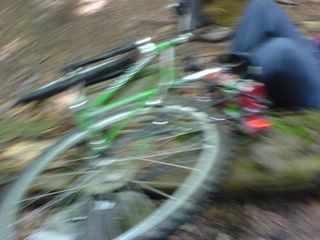Finally, the Seattle Public Library comes trhough for me with an interlibrary loan, and Real Places: An Unconventional Guide to America's Generic Landscape has arrived. Thanks to Shaken & Stirred for the recommendation.
I'd call it less a guide than an encyclopedia.
The generic places described here (a limited selection only, alas, among the hundreds) are places that belong to all of us. Every town has a Courthouse, a Good Address, a Downtown. Most towns have Vacant Lots, Abandoned Farms, Drug Scenes. Or maybe there's no Hazardous Waste Dump, Beach, Flea Market, Lover's Leap in your town. They are still terms that belong to us collectively, defined by and carrying a ton of cultural baggage. If someone tells you they went to the Flea Market, you know what they mean.
This book isn't about places; it's about the way we define places and the way those definitions change the way we use them. Clay terms his work 'geolinguistics' which is a fantastic term I wish I'd heard when I was studying linguistics in college.
The theme is turnover. Some of the terms themselves are transitory in the short term (photo opportunity, disaster area), but almost all are transitory in the long term (Growth Areas stop growing, Vacant Lots are built up, Declining Areas become Ghost Towns). The accompanying essays are just as interesting as the individual entries, and the way Clay describes the constantly changing American landscape reminds me of the life-cycle of a forest. The cycles that neighborhoods and developments go through are just as predictable (or unpredictable) as the ecological succession of a natural landscape.
The hard-cover volume that the SPL sent me is a beautiful volume, with wonderful photographic illustrations, lovingly laid out. This would make an impressive gift for an author, anyone involved in civic planning, or anyone who ever needs inspiration.
Subscribe to:
Post Comments (Atom)

No comments:
Post a Comment